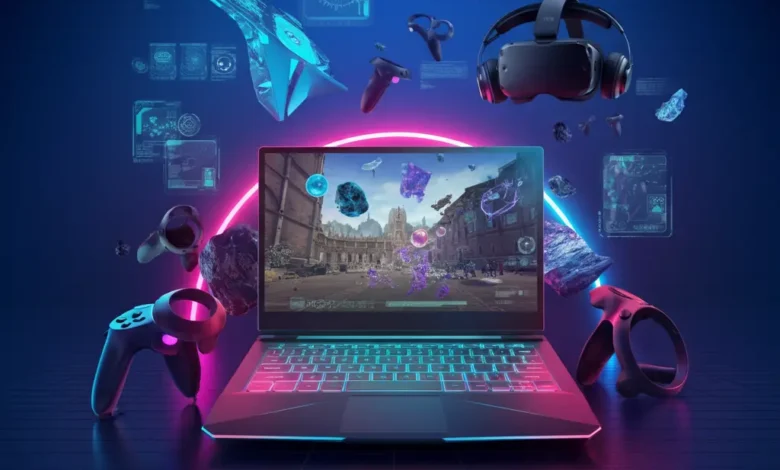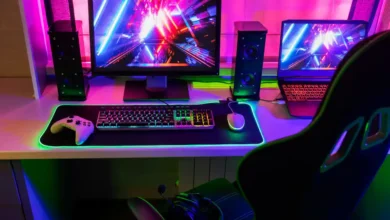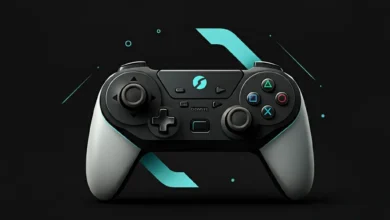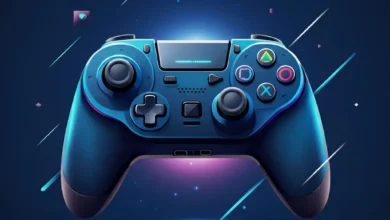How to Optimize Gaming Laptop for VR | Boost VR Performance

Virtual reality (VR) gaming opens the door to immersive experiences, but nothing dampens the thrill like laggy visuals or hardware issues. Your gaming laptop holds the key to a seamless VR adventure—but only if it’s properly optimized.
Whether you’re a VR enthusiast or just stepping into the world of virtual reality, getting your gaming laptop in peak condition is essential for smooth gameplay and maximum enjoyment.
This guide will walk you through the crucial steps to optimize your gaming laptop for VR, so you can step into alternate realities without a hitch. From hardware checks to graphics settings, we’ve got you covered.
Table of Contents
Why VR Optimization Matters
Virtual reality is one of the most demanding uses of gaming laptops. Unlike traditional gaming, VR renders not one but two high-resolution displays (one for each eye) at high refresh rates. On top of that, processing movement inputs and reducing latency are vital for maintaining immersion—and avoiding motion sickness.
Optimizing your gaming laptop ensures higher frame rates, vivid visuals, and minimal interruptions, making your VR experience as fluid as possible. Here’s how you can achieve that.
Step 1: Check Hardware Compatibility
Minimum Hardware Requirements
Before setting up VR, ensure that your laptop meets the minimum hardware requirements for VR gaming. Here’s what most VR platforms suggest as baseline specifications:
- GPU: NVIDIA GTX 1060 / AMD RX 480 or better
- CPU: Intel i5-4590 / AMD Ryzen 5 1500X or newer
- RAM: 8GB or more
- Ports: USB 3.0 and HDMI 1.3 or higher
Recommended Specifications for Peak Performance
To push your laptop further, aim for these specs to avoid lag or stuttering in graphically intense VR games:
- GPU: NVIDIA RTX 3060 / AMD RX 6700XT or better
- CPU: Intel i7 or AMD Ryzen 7 and above
- RAM: 16GB or more
- Storage: SSD for faster game loading
- WiFi: WiFi 6 or a wired Ethernet connection for stable streaming
Ensure your VR headset is compatible with your hardware. Models like the Oculus Quest 2 (via Link), Valve Index, and HTC Vive each have unique requirements, so double-check before investing in new equipment.
Step 2: Update Drivers and Firmware
Keep GPU Drivers Updated
Your GPU handles the heavy lifting in VR—rendering 3D visuals and ensuring a smooth refresh rate. Use software like NVIDIA GeForce Experience or AMD Adrenalin to regularly update drivers. Newer drivers often include performance improvements tailored for specific VR headsets or games.
Don’t Forget Peripheral Updates
Update your VR headset’s firmware and ensure the platform’s software (e.g., SteamVR or Oculus App) is up-to-date. This ensures compatibility with the latest games and smoother performance.
Step 3: Optimize Power and Performance Settings
Enable High-Performance Mode
Avoid the pitfalls of “balanced” or “battery saver” modes by enabling High Performance in your laptop’s power settings. Here’s how to do it on Windows laptops:
- Go to Control Panel > Power Options.
- Select High Performance or create a custom plan.
Maximize GPU Performance
Open your GPU control panel (NVIDIA or AMD) and set it to prefer maximum performance.
- For NVIDIA users, this is under “Manage 3D Settings.”
- AMD users can find similar settings in the “Radeon Settings” dashboard.
Plug your laptop in for power during VR sessions, as running on battery reduces performance significantly.
Step 4: Reduce Latency for Seamless Gameplay
Close Background Applications
Multitasking drains resources. Close all background programs, such as browsers and apps running in the system tray, before launching your VR game. Use Task Manager (CTRL + SHIFT + ESC) to end non-essential tasks.
Optimize Network Connection
For wireless VR or multiplayer games, a stable network is critical. Reduce latency by using a 5GHz WiFi or Ethernet connection. Avoid high-ping issues by closing bandwidth-intensive apps like downloads or video streams on other devices.
Step 5: Adjust Graphics Settings
Balance Quality and Performance
VR settings often double the workload on GPUs. Managing these settings is key for optimal performance. Begin by lowering these resource-heavy settings in your VR game or VR platform settings (e.g., Oculus, SteamVR):
- Shadows
- Reflections
- Anti-aliasing
- Texture Resolution
Aim for at least 90 FPS to avoid screen tearing and motion sickness. Using benchmarking tools like FPSVR can help you monitor and fine-tune settings.
Step 6: Cooling to Prevent Overheating
Invest in Laptop Cooling Pads
High temperatures can lead to CPU/GPU throttling, reducing the overall gaming performance. Cooling pads are a budget-friendly option to keep your laptop under control.
Monitor System Temperatures
Use tools like HWMonitor or MSI Afterburner to keep tabs on your CPU and GPU temperatures during extended VR sessions. Ideally, keep your GPU below 85°C.
Step 7: Advanced Optimization Tips
Clean Dust and Ventilation Paths
Dust buildup inhibits heat dissipation. Clean your laptop’s vents and fans regularly to maintain optimal airflow.
Use a Wired Connection for VR
If your VR setup supports it, use a wired connection (e.g., Oculus Link) instead of wireless methods like Air Link. Wired setups reduce latency and ensure smoother gameplay.
Leverage Gaming Modes
Enable “Game Mode” in Windows to prioritize gaming processes, or use optimization tools from your hardware manufacturer (like ASUS ROG Armoury Crate or Alienware Command Center).
Step 8: Maintenance for Long-Term Performance
Schedule Updates and Backups
Regularly update your system while keeping backups of your essential data. Avoid updating drivers just before a major gaming session, as compatibility issues may arise.
Keep Software Streamlined
Since VR software frequently updates, uninstall unused apps or accessories (like out-of-date VR overlays) to free up resources.
Read Also: Locating Uninterruptible Power Supply in Snowbreak
Wrapping It Up
Optimizing your gaming laptop for VR can transform your experience from choppy visuals and lag into smooth, immersive adventures. By checking your hardware, keeping drivers updated, and fine-tuning settings for performance, you’ll ensure your system delivers the power VR demands.
Dive into the world of virtual reality with confidence, knowing your laptop is ready to handle even the most demanding VR environments. Explore new worlds, battle foes in lifelike scenarios, and experience gaming like never before!


